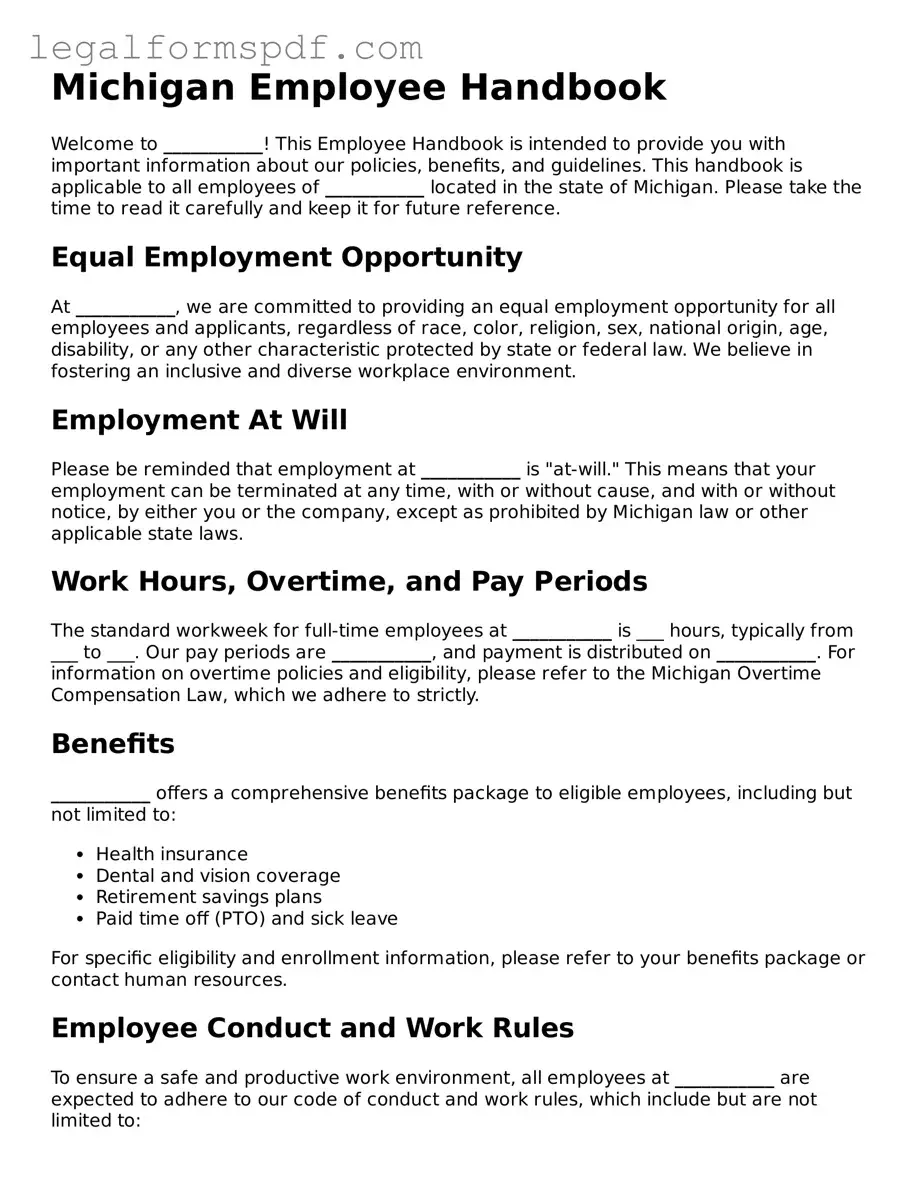Michigan Employee Handbook
Welcome to ___________! This Employee Handbook is intended to provide you with important information about our policies, benefits, and guidelines. This handbook is applicable to all employees of ___________ located in the state of Michigan. Please take the time to read it carefully and keep it for future reference.
Equal Employment Opportunity
At ___________, we are committed to providing an equal employment opportunity for all employees and applicants, regardless of race, color, religion, sex, national origin, age, disability, or any other characteristic protected by state or federal law. We believe in fostering an inclusive and diverse workplace environment.
Employment At Will
Please be reminded that employment at ___________ is "at-will." This means that your employment can be terminated at any time, with or without cause, and with or without notice, by either you or the company, except as prohibited by Michigan law or other applicable state laws.
Work Hours, Overtime, and Pay Periods
The standard workweek for full-time employees at ___________ is ___ hours, typically from ___ to ___. Our pay periods are ___________, and payment is distributed on ___________. For information on overtime policies and eligibility, please refer to the Michigan Overtime Compensation Law, which we adhere to strictly.
Benefits
___________ offers a comprehensive benefits package to eligible employees, including but not limited to:
- Health insurance
- Dental and vision coverage
- Retirement savings plans
- Paid time off (PTO) and sick leave
For specific eligibility and enrollment information, please refer to your benefits package or contact human resources.
Employee Conduct and Work Rules
To ensure a safe and productive work environment, all employees at ___________ are expected to adhere to our code of conduct and work rules, which include but are not limited to:
- Adhering to professional standards and ethics
- Complying with all safety rules and regulations
- Maintaining confidentiality of company and client information
- Respecting the rights and dignity of all individuals
Violations of these policies may lead to disciplinary action, up to and including termination of employment.
Time Off and Leaves of Absence
In accordance with the Michigan Paid Medical Leave Act, eligible employees of ___________ are entitled to paid medical leave for qualifying reasons. Other types of leave may also be available under federal law and specific state laws.
Disciplinary Policy
At ___________, any employee who violates company policies or fails to fulfill job responsibilities may be subject to disciplinary action, depending on the severity and frequency of the violation. Disciplinary measures may include verbal warnings, written warnings, suspension, or termination.
Acknowledgment of Receipt and Understanding
By signing below, I acknowledge that I have received, read, and understand the ___________ Employee Handbook. I agree to adhere to the policies and guidelines described in the handbook and understand that these policies may be revised at the discretion of ___________ without notice.
Employee Signature: ____________________________________ Date: ________________
This handbook is provided for informational purposes only and does not constitute a contract or legal document. For more detailed information on policies and procedures, employees should contact the Human Resources Department.
